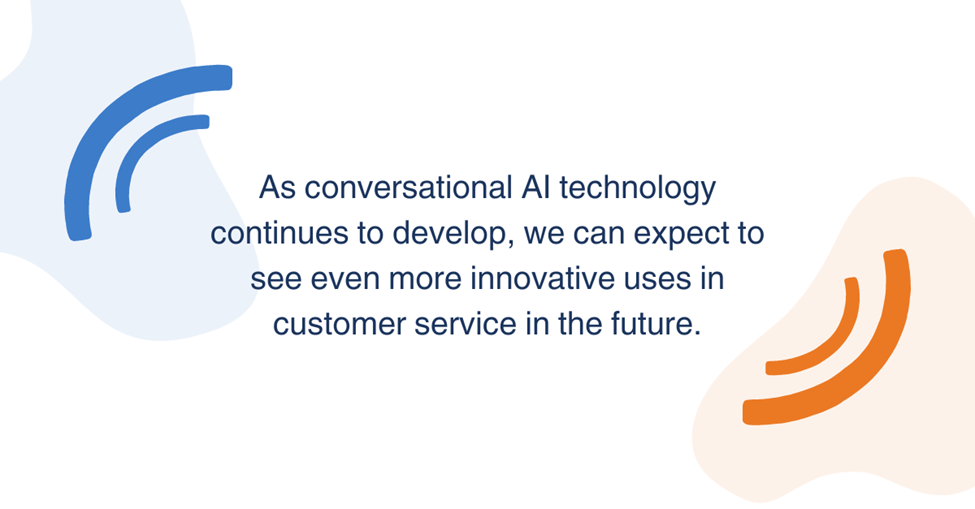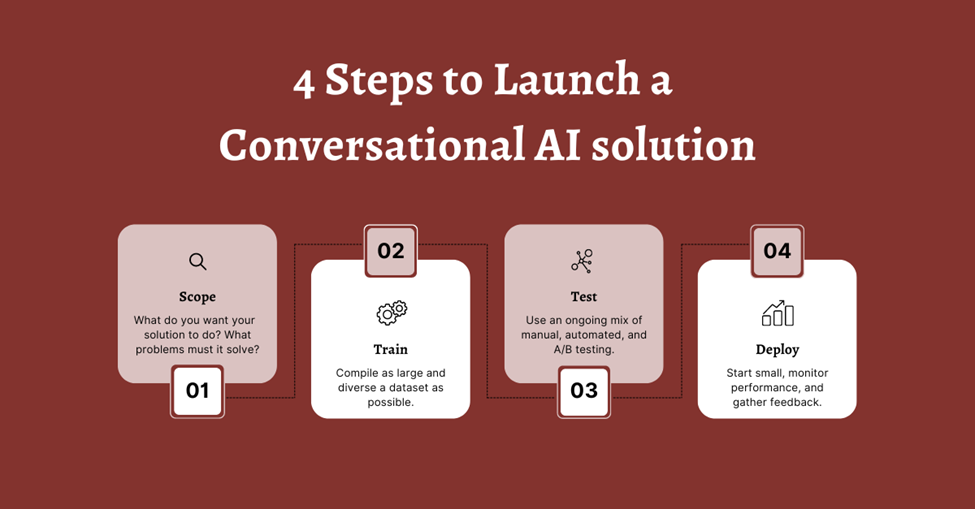The Strategic Role of Analytics Dashboards in Call Centers
When customers call, they want to be heard now, not wait. However, if there's no visibility into what's happening across queues, agents, and...
5 min read
![]() Mosaicx
:
June 29, 2023
Mosaicx
:
June 29, 2023

Conversational AI is rapidly becoming a critical tool for businesses of all sizes. It can help businesses improve customer service, increase sales, and automate tasks.
If you're considering implementing a conversational AI solution, there are a few things to consider. First, you must define the scope of your solution. Next, you must gather and prepare training data. Finally, you must know the best implementation process to avoid disruption for your customers. This blog walks through each of these key considerations.
There are many benefits to using conversational AI solutions. It can provide 24/7 customer service that is more personalized and efficient than traditional customer service.
Conversational AI solutions can increase sales by providing targeted and personalized recommendations to customers.
And of course, conversational AI can can automate tasks that are currently performed by human employees. This frees up those employees to focus on more strategic tasks.
A well-planned conversational AI solution can achieve all these benefits, but the first step is deciding which benefits you need and how the solution will deliver them.
First, you need to define the scope and purpose of your solution. What do you want your conversational AI solution to do? What problems do you want it to solve?
Conversational AI is a powerful tool that can be used to improve customer service in a number of ways. Some of the most common uses of CAI in customer service include:

The scope you choose determines the benefit of the solution. Conversational AI can improve employee satisfaction by freeing up human customer service agents to focus on more complex issues. It can reduce costs by automating tasks that are currently performed by human agents. It can reduce the number of errors made by human agents or outdated IVRs or chatbots. And it can improve customer satisfaction by providing a more personalized and efficient customer experience.
These are just a few of the benefits and the many ways that Conversational AI can be used to improve customer service. As conversational AI technology continues to develop, we can expect to see even more innovative uses in customer service in the future.
The first step in training a conversational AI solution is to collect a dataset of human-human conversations. This dataset can be used to train the AI model to understand natural language and generate responses that are relevant and coherent. The training data should be as large and diverse as possible, to ensure that the AI model can handle a variety of different conversational scenarios.
Once the training data has been collected, it needs to be cleaned and processed. This involves removing any irrelevant or duplicate data, and normalizing the text so that it is consistent. The processed data can then be used to train the AI model.
There are a number of different machine learning algorithms that can be used to train conversational AI solutions. The most common algorithm is supervised learning, which involves training the AI model on a dataset of labeled data. In the case of conversational AI, the labeled data would consist of pairs of user queries and corresponding responses.
Once the AI model has been trained, it needs to be tested to ensure that it is performing well. The testing process should involve a variety of different methods, including:
The testing process should be ongoing, as the AI model will continue to learn and improve over time.
Training and testing conversational AI solutions is a complex process, but it is essential to ensure that the AI model is performing well. By following the steps outlined above, you can create a conversational AI solution that is accurate, reliable, and user-friendly.
The final step is to implement your conversational AI solution. This involves deploying your solution to your users and making sure that it's easy to use.
With a provider like Mosaicx, your deployment platform is already picked and configured, making it much easier to get started. Here are some tips to deploy a new conversational AI solution on this type of platform after training and testing:

For building, testing and deploying a conversational AI solution, we recommend following the Mosaicx test and implementation process, which is designed to help businesses get the most out of their conversational AI solutions.
This process includes everything discussed in this blog. We define the scope and purpose by understanding a business’ needs and goals. We then collect data from the business and their users. We complete extensive fine tuning and testing in a variety of scenarios. And finally, we implement the solution by deploying to a segment of users and monitoring initial usage.
You can follow this process on your own, but working with Mosaicx comes with a few extra perks:
Conversational AI is a powerful tool that can help businesses improve customer service, increase sales, and automate tasks. If you're considering building a conversational AI solution, we recommend you follow the Mosaicx test and implementation process. If you'd like assistance in building, training, testing and deploying a conversational AI solution, please contact us to talk to a Mosaicx expert.
.png)
When customers call, they want to be heard now, not wait. However, if there's no visibility into what's happening across queues, agents, and...

Every call is another opportunity for contact centers to gather important data on their customers. That data can reveal preferences, where customers...

Enterprises can't afford to manage their customer conversations with tools that were never designed for scale. One bad interaction is all it takes to...